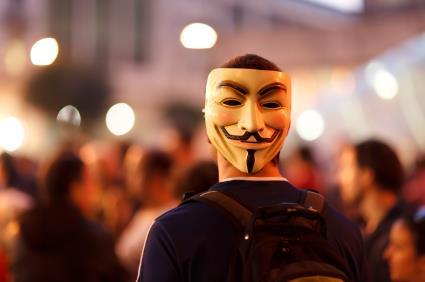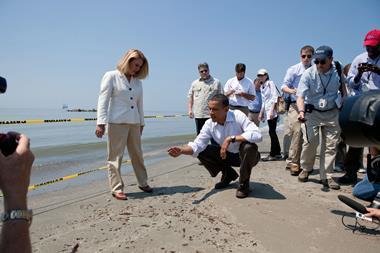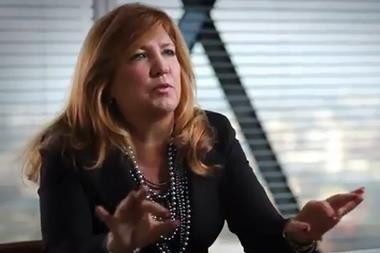A dangerous mix of demographic and societal problems is pulling us toward a dystopian future, warned the World Economic Forum (WEF) recently. It’s not a pretty picture from one of the world’s leading authorities on social and economic development. And it’s this sense of hopelessness that is contributing to a worldwide movement, which is fundamentally, sometimes violently, opposed to the status quo

Dystopia, the opposite of utopia, describes a place where life is full of hardship and devoid of hope.
“For the first time in generations, many people no longer believe that their children will grow up to enjoy a higher standard of living than theirs,” said Lee Howard, the WEF’s managing director. “This new malaise is particularly acute in the industrialised countries that historically have been a source of great confidence and bold ideas.”
The Occupy Wall Street movement, a loosely organised grass-roots movement in favour of reforming or, in some cases, overthrowing the current capitalist system, is gaining strength around the world from New York to London, Paris and Rome.
One symbol that has come to epitomise this fractious faction is the Guy Fawkes mask — popularised by the Hollywood blockbuster V for Vendetta, in which a terrorist madman unites the people against a totalitarian regime.
The collapse of capitalism altogether remains an extremely remote risk, but nonetheless a risk that some people are taking seriously. More and more people are asking whether there is a solution that will allow the world to move beyond a pure form of capitalism towards something more sustainable and less divisive.
In the words of one Guardian newspaper columnist: “During the boom years, political activism was either niche - environmental or pacifist - or weird. But suddenly it makes sense to think about large things from the bottom up: it makes sense to talk about capitalism not as this inevitable monolith, but as a system that could use some improvement. More than improvement, a system that could use some help.”
There’s a recognised phenomenon of protester profit. It means that protesters deliberately create the conditions where a policeman or a security guard does something that infringes their civil rights and then they sue them for it.
And what does this mean for the big businesses that are at the heart of this doomed system? Almost certainly they will have to bear the brunt of a serious backlash. At the extreme end this means more violence from activist groups and disenfranchised individuals who associate big business with the moral failures that led to the global crisis. At the very least the private sector can expect to become much more heavily regulated.
Sam Rosenfeld, chairman of the Densus Group and an expert on protester management, sees an increased threat of violent or “direct action” against a wide range of businesses.
It’s already a big problem, he says, but “protests are receiving much more attention because the media is more tuned into them particularly as a result of the Occupy Movement. Greenpeace have always been an effective direct action protest group. US Uncut and UK Uncut were founded to protest those corporations that don’t pay their fair share of taxes.”
There’s nothing new in protesters taking action against companies that they perceive to be acting inappropriately. But since the authorities have begun dismantling sit-in demonstrations, such as “tent city” outside St. Paul’s in London, the protesters tactics have started to change. Elements of the Occupy movement are abandoning the “camp strategy”, says Rosenfeld, in favour of more direct action targeted at specific businesses (see the Deutsche Bank letter bomb).
As well as the operational and reputational risks companies on the receiving end of protester action have to be wary of litigation, he says. If, for example, a security guards oversteps their legal entitlement for how to deal with a protester during an occupation the company could end up getting sued.
“There’s a recognised phenomenon of protester profit. It means that protesters deliberately create the conditions where a policeman or a security guard does something that infringes their civil rights and then they sue them for it. So when you start to talk about the more extreme or violent action measures - those certainly can’t be ruled out.”
Five percent of people involved in a street protest are willing to engage in violence, says Rosenfeld. Fifteen percent will engage in violence if they see that they can get away with it. And the other 80% will have no intention of being involved in violence unless something so outrageous happens to them that they have no choice.
“That is why anarchist groups at significant national security conventions in the US try to get the police to overact against the whole crowd because then their job is done.”
Rosenfeld expects to see more direct action in the future as larger numbers of people become increasingly aggrieved and disenfranchised. He also anticipates more secondary targeting and smear campaigns against company directors or bosses. Secondary targeting is a trend whereby action is taken against associated third parties, which are normally softer targets, with an economic link to the primary target.
“This threat will widen out as the number of companies likely to be targeted increases because the drivers of what will anger people are broadening. In addition, the threat will widen out because as primary targets become more protected and inured to the threat, groups will go after secondary and tertiary targets.
“For instance when Greenpeace wanted to draw attention to the purchasing of the Indonesian forest by cardboard companies they didn’t go after the cardboard companies and they didn’t go after the forestry companies, they went after Matell. Greenpeace turned up at Matell headquarters with dancing girls and someone dressed as Barbie in a digger and it was designed to spark a social media campaign directed primarily at children. They wanted kids saying to their parents ‘Well, I don’t want a Barbie, because Barbie’s cutting down the forests.’ Direct action doesn’t have to be focused at economically related operations, quite often direct action is focused at reputation and brand value.”
What does this mean for risk managers? “They need to be looking not only at their own risks, but at their counterparties and their suppliers and clients,” says Rosenfeld.
As for appropriate defensive measures, the most important thing is “situational awareness” and knowing what the threats are, he adds. “Do I have protester exposure and if so what is it? That includes a review of your own company’s activities as well as your clients’ and suppliers’ procedures. Once you have that picture it’s then a case of what are the physical measures you need to take and other considerations involved in protester management.
It’s important to educate your staff about the unique tactics that protesters use, says Rosenfeld. “There was a notable incident in a protest 18 months ago where a protester climbing a ladder to try and stop operations said to an employee who was blocking the way: ‘This is a peaceful protest you can’t stop me.’ And the member of staff got out of his way. Not the right thing to do. But if you have not educated your staff in the correct actions to take in dealing with these situations, you leave the company open to both operational and reputational damage.”
Whatever way the global economic system evolves what’s clear is that the next ten years is likely to be characterised by increasing uncertainty and possibly some seismic shifts as the world realigns itself to a new growth and development trajectory. If the civil unrest witnessed in recent years is anything to go by it could be a tumultuous time.




















No comments yet